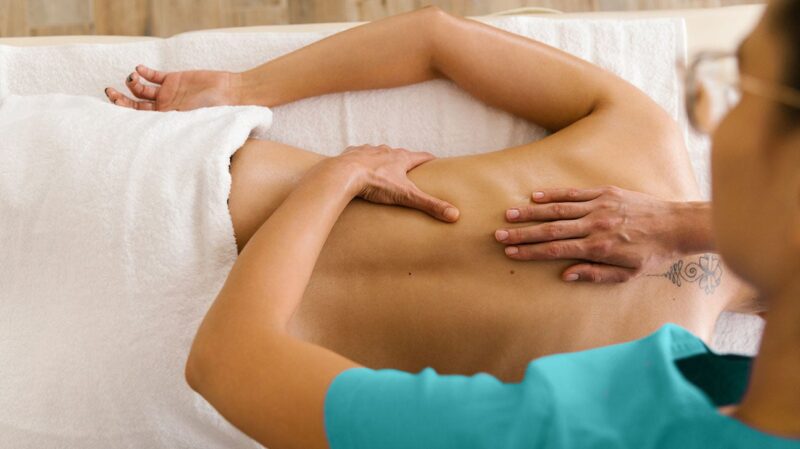Massage techniques around the globe are as diverse as the cultures that cultivate them, each offering unique approaches to relaxation and healing. From the rhythmic strokes of Swedish massage to the intricate pressure points of Thai massage, the intricacies of these practices tell rich tales of tradition and philosophy.
Imagine sinking into the soothing embrace of a hot stone massage in a serene mountain retreat, while elsewhere, the invigorating movements of a Japanese Shiatsu session rejuvenate both body and spirit. In this exploration, we will traverse continents and delve into the art of touch, uncovering not just the techniques themselves but the profound stories woven into the fabric of each method.
With every stroke and press, we open a window into a world where wellness is a universal language, yet is expressed through an array of enchanting dialects. Join us on this journey to discover how the ancient and the modern collide, reminding us that healing is a timeless art, celebrated in myriad forms.
Introduction to Global Massage Techniques
![]()
Massage techniques have long been integral to cultures around the globe, each bearing unique philosophies, methods, and benefits that reflect the traditions from which they originate. From the gentle, flowing movements of Swedish massage that aim to promote relaxation and circulation to the deep pressure of Thai massage, which incorporates yoga-like stretching and breathing techniques, the diversity in approaches is striking.
Imagine the rhythmic, invigorating strokes of Hawaiian Lomi Lomi—a celebration of nature and spirit—juxtaposed with the meticulous, acupressure-rich practice of Traditional Chinese Medicine, where the flow of energy is paramount.
Each style is a window into the beliefs and values of its culture, revealing not just ways to alleviate physical tension but also to foster emotional harmony. In this exploration, we will journey through these varied practices, uncovering connections and distinctions that enrich our understanding of wellness through the art of touch.
Traditional European Massages

Traditional European massages encompass a rich tapestry of techniques that reflect the continents diverse cultural heritage and centuries of therapeutic practice. In the soothing embrace of a Swedish massage, long, gliding strokes coax tension from the muscles, promoting relaxation and enhancing circulation. Meanwhile, the deep tissue method, with its more focused pressure, delves into layers of fascia to relieve chronic pain and stiffness.
Don’t overlook the invigorating effects of the sports massage, honed for athletes, which uses stretching and compression to prevent injuries and improve flexibility. Each technique, whether it’s the rhythmic kneading of a classic Shiatsu-inspired treatment or the calming strokes of a traditional Balinese massage, invites a unique experience, drawing on age-old wisdom tailored for the contemporary seeker of wellness. Just as varied as the locales they hail from, these massages not only provide physical relief but also offer a moment of respite, a pause in the hurried cadence of modern life.
Asian Massage Traditions

Asian massage traditions are a rich tapestry of practices that reflect millennia of cultural heritage, philosophy, and healing wisdom. From the gentle yet powerful strokes of Thai massage, which blends acupressure and yoga-like stretches to awaken the bodys energy flows, to the deep tissue techniques of Shiatsu that focus on pressure points to release tension, each method carries its unique essence.
Chinese Tui Na, for instance, is not only a massage but a holistic approach that strikes at the very heart of traditional medicine, emphasizing the balance of Qi. Meanwhile, the soothing rhythms of Balinese massage draw on techniques that celebrate both relaxation and rejuvenation, utilizing aromatic oils to enhance the experience.
Each tradition not only aims to alleviate physical discomfort but also seeks to create harmony, enlightening the mind and spirit along the journey of well-being. Such diversity in these Asian practices invites exploration, reminding us that massage is not merely a luxury; it is an art form deeply rooted in the quest for balance and healing.
Conclusion
In conclusion, the diverse array of massage techniques from around the world illustrates not only the rich tapestry of cultural traditions but also the universal pursuit of wellness and relaxation. From the rhythmic movements of Thai massage to the therapeutic benefits of Swedish techniques, each style offers unique advantages tailored to individual needs.
As people increasingly seek holistic approaches to health, understanding these varied practices becomes essential. For those interested in exploring these different methods, 마사지사이트 serves as a valuable resource, connecting individuals with skilled therapists and authentic experiences. Ultimately, embracing the global perspectives on massage can lead to a deeper appreciation of the art and science behind this age-old practice, promoting a more enriching journey toward well-being.


